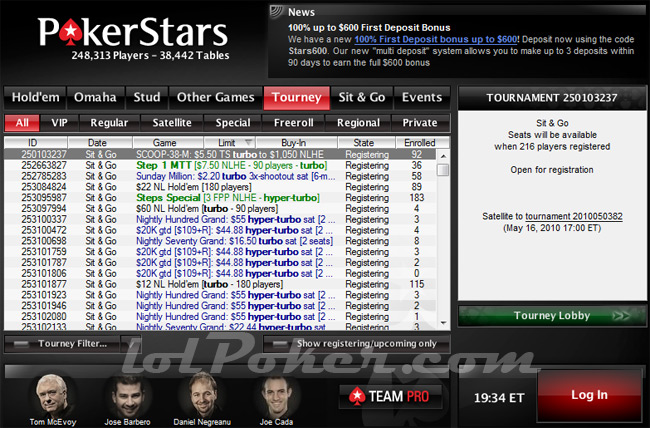Badugi Poker Strategy Guide
The basic Badugi strategy is quite simple to handle once you have the basics down. Badugi is also known as Padooki so this page is also a Padooki poker strategy guide as well. This game has four rounds of betting for different draws of the cards after the initial flop. If you are a beginner at this game, please check out the links to the right to read about articles such as rules, how to play and other various strategy guides. Remember, strategy is different depending on whether you are playing in ring or cash games, tournaments and sit and go tourneys, so read up on these articles as well for specific strategies. These Badugi strategy guides will inform beginners on how to improve their skills but will also help out intermediate and advanced players who may not have heard about some of these tips.
Basic Strategy for Starting Hands
First, I will recall some of the basic rules of badugi. Each player will be dealt four cards from a standard deck of 52 cards. The goal of the game is to get the lowest possible 4-card hand in order to win the pot and each card must be of a different suit. There are 4 rounds of betting with 3 draws. The basic strategy assumes that aces are only low, so they are not counted as a high card. The rules of Badugi require that any hand may not have a pair or a flush, which are a series of cards of the same suit. Straights are irrelevant and do not harm nor benefit your hand. Although the lowest straight or an off-suit ace-low straight (A,2,3,4) is known as a "Badugi" and this is the most powerful hand in Badugi poker, yet it is not the property of this hand being a straight that makes it powerful. For instance, A-2-3-5 is the second most powerful hand.
For the final draw, any hand with pairs or flushes will require additional action. In the case of these kinds of hands, the highest ranked card will be removed and the player will have only a three card hand. A good thing to remember is a 4 card hand will always outrank a 3 card hand. This fact is important when applying your strategy.
When you receive your starting hand, there are a few good guidelines to follow to determine if you should continue playing or get out early. First of all, if two of your cards have a value of 4 or lower, they are off suit and there are no pairs, you should continue playing. If you have three cards valued at 7 or lower and they are not suited or paired, you should also continue. The general strategy is to fold on anything weaker than this. Remember, lower cards are stronger in badugi poker. Anything higher than an 8 is considered a poor card to use during your starting hand so watch out for this. If you get a badugi, or a 4 card hand all with different suits and no pairs, then you should stick with this. If all the cards are lower than 8, you should be raising! If some are higher than 8, then you should just bet normally or call the bets.
Your position on the table can even influence your strategy and there are a few guidelines to follow. If you are early or first to act on the table, play more tightly since you do not know how much raising is going to happen and you have no indication of what the rest of the table has. So only play 3 card hands that have values equal to 6 or less. If you are in the middle of the table where you are not the first, but not the last to act, loosen up a little. If you are in the mid position, play any 3 card hands that have values of 7 or less with at least 2 cards being less than 5.
If you are in the late position or last to act, you have the benefit of knowing all the knowledge on the table. For instance, if you have a 3 card hand with values less than 8 with 2 cards that are less than 5, then play the hand or even raise if no one else has. Remember to be cautious when anyone raises and also remember that these are just general guidelines to follow. You should determine what kind of players, if they are usually tight, aggressive, bluffers and etc. Then use this information with the guidelines to make your strategy work. It does take some practice but it pays off in the long run.
Strategy for Badugi Draw Rounds
In the first draw, players will likely have a good hand that can be used in play. If you are following the strategy, you should have off-suited cards and 3 of them. It doesn't matter if your suit is diamond, hearts, clubs or spades and if the colors are red or black, as long as you have a different suit for each card. Now if one of your competitors is standing pat (not drawing any cards), you should make sure all three cards in your hand are 7 or less. If they are not, then the best strategy is to fold. Remember, when you have 3 cards and are drawing one card to find that last suit, there are only 13 cards in a given suit out of the total 52 card deck, so the odds are roughly 25% that you will come through.
Then the second draw phase should begin with you having a 3 card hand with cards less than seven and all the cards should be off-suited. This is lining up to be a powerful winning badugi hand. Next use your poker skills to read the other players. If players are not drawing card in any round, then you should be cautious and try determining if they are bluffing or not. When you have an off-suited four card hand with no card higher than a jack, then there is no need to draw. If you stand pat and don't draw, other players may fold by the assumption that you may have a winning hand. A jack high badugi is still a decent hand and will beat every 3 card hand possible.
In the third and final draw round, the Badugi strategy becomes important. An off-suited 4 card hand is pretty good, especially if all cards are lower than 8. In this case, players should raise or re-raise the bet, otherwise, you may want to just call the bet if you think a player might have a Badugi. Remember that any 4 card hand will always beat any 3 card hand. So watch to see if another player has been betting and raising while drawing cards at the same time. This might indicate that they have a powerful three card hand such as A-2-3 but not a badugi. If they stood pat on the last draw, there is a chance they do have a badugi hand.
Again, these are just general guidelines so you need to watch the other players, use your badugi skills and remember how people were betting in previous draw rounds. Did they stand? Did they draw? Are they bluffing? You need to determine the right move depending on what the other players are doing. This is the core of real poker strategy.
Badugi Bluffing Strategy
A great way to bluff in Badugi is to stand pat on the draw rounds. Players will start to assume that you have a powerful hand and there is no need to draw further cards. Standing on the second draw instead of the first could be used in a semi-bluff or partial bluff. Players may then assume that you connected or completed your good hand on that draw and players will think you have at least a decent hand and they will be more likely to fold if they have a mediocre hand. This type of bluff is more powerful if you have a badugi hand, but with the weaker higher valued cards.
Straight bluffing is generally good to do early on in the game when there are not as many people committed to the pot or have almost no money invested yet. This works especially well when you are playing on a table with a lot of tight players. Recall that a straight bluff usually has a horrible hand that would lose if anyone called it and a semi-bluff means you have a decent but not a great hand, the semi-bluff strategy also works well later in the round since you have something to work with when less people are going to want to fold. If you are going to semi-bluff, you should have at least a 4 card hand or a powerful 3 card hand like A-2-3 or else fold on anything else.
You also need to factor the number of people playing at the table into your strategy. If there are a lot of players in the game, you probably do not want to bluff since there will be a much greater variation of players holding good hands. Instead, go to a smaller table with about 4 people if you want to bluff because your odds of winning are much better when playing against less people. Rather than being 1 in 8, you could be 1 in 4 of winning the pot on average. You can bluff on an 8 player table but it is not recommended if you a 2 or 3 card hand.
There are a few other strategies to keep in mind with bluffing. It is always an advantage to be the last person to act or bet since you can see what everyone else has done. This provides a great opportunity to bluff because of the additional knowledge you now know. Players last to act will also be able to gauge how well their hands are against the rest of the table as well and have the option to fold if a game changing situation arises instead of getting drawn into a bunch of people raising all at once for instance. So keep this in mind when playing badugi.
The bagudi snow strategy
There is a strategy known as snow or snowing in badugi poker that is very useful and is related to bluffing as well. I wrote another article about this for even more details. Basically, snowing involves standing pat or not drawing any cards, even if you do not have a 4 card badugi. The goal here is to make players think that you make a great hand right off the bat. This is actually a form of straight bluffing but can be used in a semi-bluff if you have a nice 3 card hand at least. Watch your players and use the snow strategy aggressively if there are few rounds of drawing left and a player has just drawn 2 cards, which indicates a very weak hand. This can be done early and works well if players are drawing lots of cards on each round, indicating many weak hands that will probably fold.


 US Players and Credit Card Deposits Accepted!
US Players and Credit Card Deposits Accepted!


